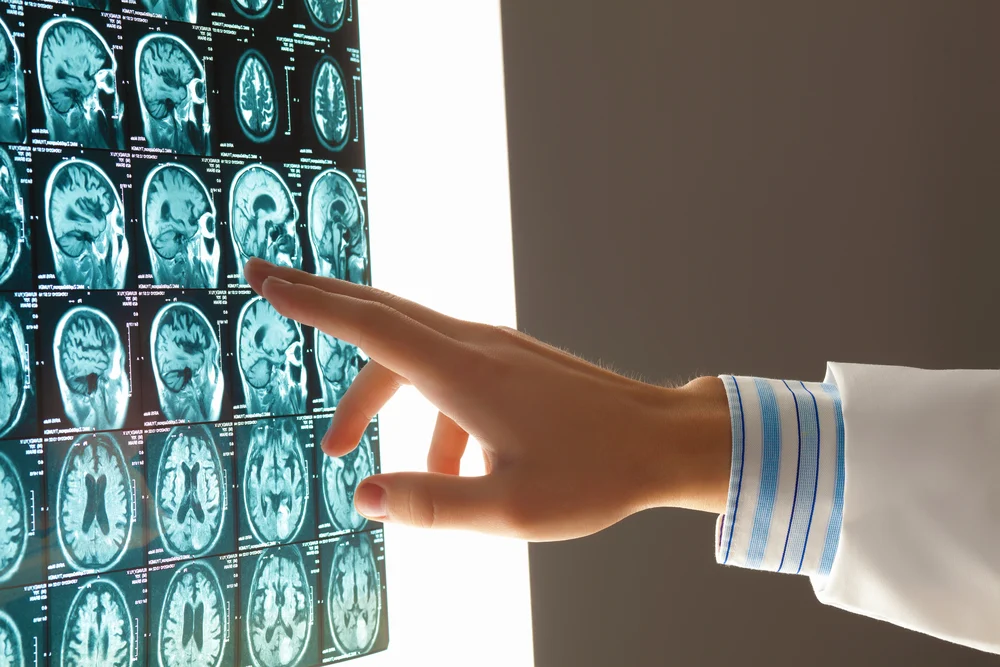Working in the emergency department as a nurse practitioner, I order CT scans in my evaluation of patients every day. When I was newer to my role, I had a lot of questions about diagnostic imaging, when it was indicated, and what test to order. One of these questions that came up frequently related to CT scans was “Do I need contrast?”. If you’re a nurse practitioner who struggles with the same question, check out the following guide to contrast and CT scans.
Types of Contrast
There are several contrast agents that may be used in performing CT scans. The most common are baruim and iodine based. These agents for enhancing the image created on CT may be delivered by a number of different routes, the most common of which are oral and intravenous.
Oral
Oral contrast is generally used for visualization of the abdomen and/or pelvis when there is suspicion of bowel pathology. These agents are not used for imaging of the abdomen and/or pelvis if bowel pathology is not suspected, or if doing so will delay scanning as in the case of acute trauma.
IV
IV contrast may be used to visualize vasculature as well as the internal organs of the abdomen and pelvis. Renal function should be assessed with a baseline creatinine level before administration as patients with impaired renal function are at risk for complications associated with IV contrast.
Indications for Non-contrast CT
Contrast is not used in patients with head, extremity or spine trauma. It is also not used in patients with suspected acute stroke. Finally, imaging of the abdomen and pelvis to assess for renal stones also does not require CT contrast.
Here is a summary of the indications for non-contrasted CT:
- Brain – Trauma, headache, bleeding, shunt check, mental status change
- Sinuses – Pain, congestion, sinusitis
- Orbits – Trauma, fracture, foreign body
- Facial Bones – Trauma, pain
- Chest – Nodule, cough, pain
- Abdomen and Pelvis – Hematuria with pain, renal stone
- Spine – Pain, trauma, fracture
- Extremities – Fracture, fusion, malunion
- Pelvis – Trauma, fracture, pain
Indications for Contrasted CT
Contrast helps enhance certain body structures. Almost always, CTs should be ordered with or without contrast, not both. Here is an overview of the indications for contrasted CT:
- Orbits – Infection, mass
- Neck – Mass, adenopathy
- Chest – Mass, cancer/metastatic workup, lymphoma, sarcoid
- Abdomen and Pelvis – Pain, colitis, Crohn’s, appendicitis, tumor, cancer, mass
Indications for CT Angiography
CT Angiography, or CTA, is a type of contrasted CT scan used to evaluate the blood vessels. Below is an overview of the following CTA studies and their indications:
- Abdominal Aorta (CTA Abdomen) – Aneurysm, dissection, post stent grafting, renal artery stenosis, metastatic stenosis
- Pulmonary Arteries (CTA Chest) – Aneurysm, dissection, chest pain, dyspnea, pulmonary embolism
- Thoracic Aorta (CTA Chest and Abdomen with Runoff) – Tachypnea, hemoptysis, dyspnea, pulmonary hypertension, DVT
- Lower Extremities (CTA Abdomen and Runoff) – Peripheral artery disease, DVT
- Carotid (CTA Neck) – stenosis, bruit, TIA, CVA, vascular tumor
- Brain (CTA Head) – Aneurysm, TIA, CVA, intracranial hemorrhage
Contrast Contraindications
Regardless of the pathology you’re looking for, contrast isn’t right for everyone. Nurse practitioners must be familiar with the contraindications for CT contrast administration.
Metformin Use
IV dye may cause a temporary alteration in kidney function. Given that metformin is excreted through the kidneys, IV contrast may impair metformin clearance from the body putting the patient at risk for metabolic acidosis. Metformin should be held for 48 hours after the administration of IV contrast, and resumed only after serum creatinine returns to baseline levels, according to the U.S. Food and Drug Administration. Many practices have their own protocols for IV dye administration in patients using metformin so nurse practitioners must familiarize themselves with these policies.
Pregnancy
While adverse effects to the fetus have not been demonstrated with IV dye, contract does cross the placenta. The American Academy of Radiology recommends the use of IV contrast only if care of the patient cannot be accomplished without it.
Renal Failure
Contrast can cause acute renal failure. This risk is significantly increased in patients with chronic renal disease, diabetes, heart failure, and anemia. Hydration can decrease these risks. Measure serum creatinine before ordering CT studies with IV dye to assess for baseline renal insufficiency. In patients with elevated creatinine, withholding IV dye may be necessary. Most healthcare facilities have protocols dictating the cutoff at which IV dye may be administered in patients with impaired renal function.
Allergic Reaction
Prior to contrast administration, patients should be asked about previous allergy to CT contrast. Patients with a mild allergy may be pre-medicated with an antihistamine or steroids before imaging. Patients with history of anaphylactic reaction should not receive contrast.
If you’re ever stuck when it comes to the correct diagnostic imaging method for your patient, pick up the phone and call the radiologist or imaging facility with whom you work. These experts are usually happy to help select the correct test for your patient.



